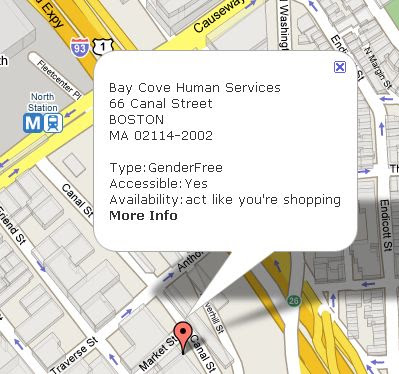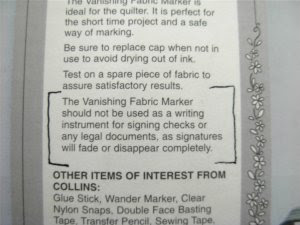Book: Headless Body in Topless Bar
Posted in: UncategorizedHeadless Body in Topless Bar: the book of greatest hits among NY Post’s headlines. Looks like a great gift for a copywriter. Published in March 2008. About $10 on Amazon.
Headless Body in Topless Bar: the book of greatest hits among NY Post’s headlines. Looks like a great gift for a copywriter. Published in March 2008. About $10 on Amazon.
I’ve got too many Firefox tabs open, each waiting to be blogged about at just the right time. Well, I need to restart the browser, so here’s everything at once.
– I’ve been looking for self-help books published during the first dot-com era. Drop a comment if you have an interesting one in mind. Here’s one with a funny cover on e-Branding (love the “e-“) from 2000.
– Dropclock, a really cool screensaver (video below) with Helvetica numerals falling in water in slo-mo.
– Polaroid has come up with a portable instant photo printer to bring us back the beloved functionality of the classic camera.
– How about computer-generated books? Here’s a story about a professor who has his computers scrape and digest content from the Net and spit it out as books. Here’s one out of some 200,000 created to date.
If there were an award for the most popular PowerPoint graph, it would definitely go to Forrester’s social technographics ladder. Now, two Forrester analysts behind the report have an entire book out, and it’s called Groundswell: Winning in a World Transformed by Social Technologies. You can get a taste of what’s inside from an article the authors wrote for MIT Sloan Management Review in February, or from book blog. I’m looking forward to the wealth of case studies the authors have amassed.
Groundswell is on Amazon for $19.77.
Out of curiosity, I went through Amazon’s bestseller list for the business category and plucked out all books related to advertising:
It’s amazing how Dale Carnegie’s self-help How To Win Friends book is still on the top of the list (120th sales rank overall) after so many years. It is a great book, too; one of the few that I keep re-reading to discover new ideas. After Carnegie’s, a lot of the recently published books seem rather derivative or reduntant.
The Psychology of Persuasion and Made to Stick should be fun to compare — the seem to cover similar grounds. I’m really looking forward to getting my hands on Predictably Irrational written by a professor at Sloan. It is also #1 on the bestseller list right now.
Fast Company runs an article in which Duncan Watts, a network-theory scientist, puts to test the idea that trends are sparked by a handful of highly connected individuals, or the influentials, as they have become known after the bestsellers The Tipping Point and The Influentials.
“Watts believes […] a trend’s success depends not on the person who starts it, but on how susceptible the society is overall to the trend–not how persuasive the early adopter is, but whether everyone else is easily persuaded. And in fact, when Watts tweaked his model to increase everyone’s odds of being infected, the number of trends skyrocketed.
If society is ready to embrace a trend, almost anyone can start one–and if it isn’t, then almost no one can,” Watts concludes. To succeed with a new product, it’s less a matter of finding the perfect hipster to infect and more a matter of gauging the public’s mood. Sure, there’ll always be a first mover in a trend. But since she generally stumbles into that role by chance, she is, in Watts’s terminology, an ‘accidental Influential.'”
Watts has published several books on the subject, including Six Degrees: The Science of a Connected Age.
Update [Jan 27 ’08]: Mike Arauz from Deep Focus responds.
My own beef with the theory of influentials is its implicit assertion, in my understanding of The Tipping Point, that if you have influence over a certain social network, this influence will have the same weight over the entire range of topics. I don’t know if this Absolute Influence exists, and my own daily experiences offer nothing to support the idea: it is not a given that someone who is an apparel fashion trendsetter in one particular network will be have the same influence over the choice of others’ plasma TVs, for example. Likewise, one’s influence will also vary across different networks, which makes identifying and targeting The Influentials a much more complex task than it is suggested by the theory advocates.

Act like you’re shopping: a map of public restrooms in Boston and around the world at safe2pee.org.
On the one hand, Boston’s frequent bathroom visitors want to legislate access to retail-based restrooms: “Patients suffering from intestinal disorders urged lawmakers yesterday to pass a bill requiring private businesses to open up their bathrooms to people during medical emergencies or face a fine of $100.” (Metro).
On the other hand, Westminster’s (that’s in the center of London) city council created a system where people with the urge send a “toilet” text message and get locations of the nearest facilities sent to their cell phones. “Stores started signing up almost immediately, according to councilor Alan Bradley. And, once through the doors, there is every likelihood that the potential customer will relax and become an actual customer.” (Retail Wire via Store Media News).
Of course, Charmin bathrooms show just how appreciated a good branded bathroom at the right time could be. And I think it was Paco Underhill in Why We Buy who suggested that bathrooms in supermarkets can be used to sample relevant products from the suppliers — paper towels, soap, toilet paper, towels, napkins, perhaps also combs or mirrors.
If you are interested in bathroom (re)design for your company or a client, take a look at Public Toilet Design.

Public Toilet Design: From Hotels, Bars, Restaurants, Civic Buildings and Businesses Worldwide

Warning: The Vanishing Fabric Marker should not be used for signing checks.
The 2007 winners of Michigan Lawsuit Abuse Watch’s “Annual Wacky Warning Label Contest” are in. The one for the vanishing marker could be used as an ad copy. The Watch also has just published a book Remove Child Before Folding: The 101 Stupidest, Silliest, and Wackiest Warning Labels Ever. Another good one is The Warning Label Book.
Paperspine runs on a model similar to Netflix’s, but for books. For a monthly cost of $9.95 and up + postage, you can get two or more books out at a time. Their collection isn’t huge — 150,000 books — but they do have a few books on advertising that I’ve been meaning to read forever, like the Confessions of the Advertising Man, and more good fiction than I’ll ever have time for. Don’t know if they have this entire social recommendation thing figured out, but it’s a great idea for anyone who moves a lot and hates accumulating stuff. There’s also Booksfree.com, a competing service with similar plans.